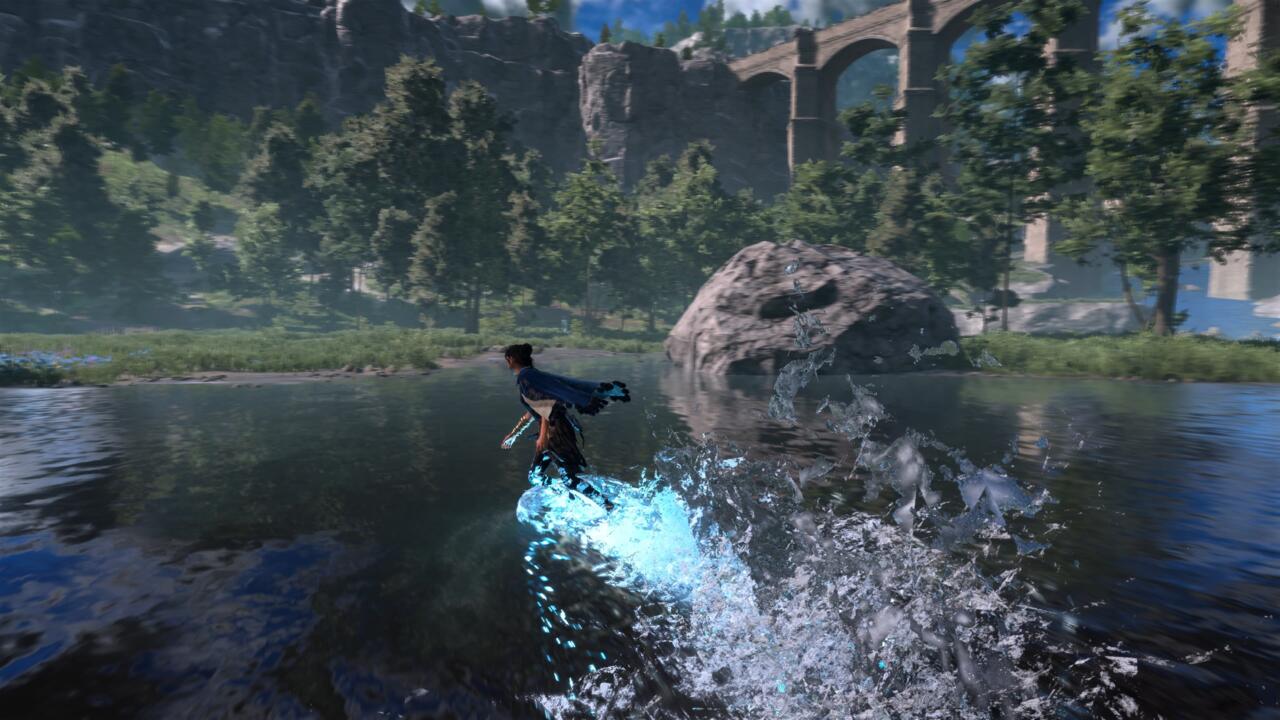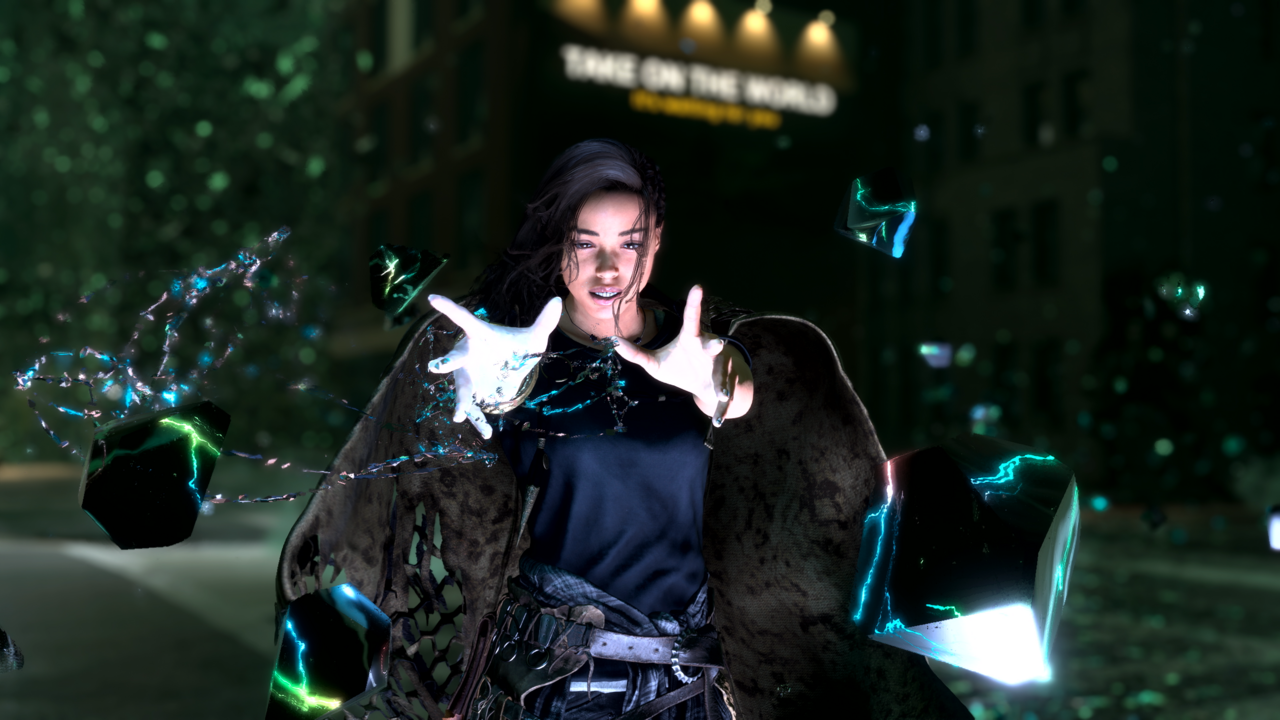Forspoken got off to a rough start even before the game launched back in February. Certain early trailers featured a few awkward, out-of-context lines from the protagonist, Frey Holland. Those became a major talking point online, drawing attention away from what the focus should have been on: the terrific parkour.
Forspoken could never quite shake that initial negative impression, but despite what the internet would lead you to believe, the game deserves a lot more praise than it received, especially when it comes to its unique, magical movement.
Frey gets transported to a fantasy world shortly after the story begins, and once tutorials end, the land of Athia is yours to explore. The map is much larger than you’d expect, and Frey has nothing but shoes on her feet and a bit of magic to help her get from place to place. The wide-open areas aren’t exactly littered with buildings or closely built structures to latch onto, which rules out any kind of Spider-Man-like movement system. Instead, developer Luminous Productions decided to go for fancy footwork with stylistic flourishes.
It may sound simple, but, essentially, Frey just sprints and hops across the giant map. These little marathons only get better as the game progresses, as she gains access to speed boosts, quadruple jumps, wall-scaling techniques, a flaming grappling hook, and even a magical surfboard made of water and ice.
Frey’s magic is split into four elements, starting with Earth, which introduces her base set of movement skills–Shimmy, Flow, and Leap–that the rest are then built from. Shimmy kicks off the ground to allow quick, well-timed hops, Flow is a continuous sprint with auto parkour to run around or over obstacles, and Leap scales sheer walls. Each new elemental skill tree brings a notable addition to your arsenal of traversal abilities to improve upon those three main starting points.
Fire adds a speed boost and a flaming whip that Frey uses to zip across gaps and swing through the air. Water provides a super jump, a magical surfboard, and a gravity-defying float to survive drops from high places. And, finally, the electricity skill tree unlocks a quadruple jump and short-range teleportation.
By the time you acquire the fourth element, you’ll already be using every movement skill at your disposal in perfect parkour harmony. Every single parkour skill is necessary at some point, giving you reasons to try them all. With that said, it’s often possible to get by simply sprinting from one spot to another…but why would you? The electric multi-jump and teleports appear in the final skill tree for late-game obstacles, but you’ll still want to use them all over Athia. Even the later powers bring style and utility, adding embellishment to an already complete system.
Any movement system in an open-world game that makes you think twice about fast traveling deserves a real shout-out. Insomniac’s Spider-Man 2 is the best example of that this year. And I’m not saying Forspoken’s open-world traversal is on that level, but in my eyes, for this specific gameplay element, it comes in second. Yes, even above the other big-name parkour contender, Assassin’s Creed Mirage.
Forspoken’s parkour manages to capture that sweet spot where flair and fluidity meet speed. You can get from point A to point B in style using several useful, visually stunning abilities without sacrificing momentum, like a much more magical version of what Spider-Man 2 offers.
Even with a stamina meter, Fospoken rarely forces you to slow down for Frey to catch her breath. In fact, the game has several ways to refill stamina as you free run to your destinations. Once you get used to all of the movement options, along with the timing of Frey’s animations, you’ll completely forget there’s a stamina meter on-screen at all. Eventually, the only time stamina will matter is during combat, which is how I feel it should be handled in most games open-world games.
The unique parkour elements make their way into the fights as well, so the fluid movement isn’t just tied to parkour. Frey can slide, flip, and twirl her way through battles to avoid enemy attacks, providing that same elegance seen outside of combat scenarios. Dodges feel just like regular world traversal, with Frey able to narrowly avoid damage through sorcerous acrobatics.

Running, leaping, and surfing through Athia never got old, no matter how many hours I spent speeding around the somewhat sparse landscape. It’s a shame that the fantasy setting doesn’t feel more full of life, because Luminous Productions’ movement system deserves to exist inside a world that feels like it’s worth exploring.
As it stands, the only reason to step off the beaten path is to upgrade Frey or find pieces of gear that aren’t nearly as useful as they should be. Frey’s magical movement feels whimsical and joyous in a place devoid of equal whimsy. Only a few of the environments are distinct, while the others feel more like palette swaps of each other.
Luminous Productions did announce that the studio will be shutting down and folding back into Square Enix, but I hope all of its hard work is not lost forever. We may never see a Forspoken sequel–I sincerely hope we do–but, at the very least, Square Enix needs to slap those magical parkour features in a new game to give us that fantastic free-run feeling once again.
